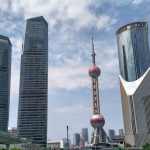The energy demands of a growing world never cease. Unfortunately, past ways of providing power, particularly coal, are becoming less viable due to increased regulation centered on environmental concerns and human health protection. The coal plants of the past are entering obsolescence as the world turns to shale gas extraction and clean power sources such as solar, wind, and geothermal to meet the global energy needs of tomorrow. Combined cycle technologies are replacing coal-fired plants, creating profitable markets for gas and steam turbines. Meanwhile, we improve existing technologies and uncover new and exciting ways of providing the power sources which will energize the 21st Century.

Is coal dead? Far from it. China, India, and other emerging regions need economical coal to power their rapid pace of development, and new clean coal technologies are capable of providing energy more efficiently and with less environmental impact. The proliferation of CCGT plants and the re-emergence of nuclear power production, post-Fukushima, have created a growing demand for steam and gas-powered turbines. New analysis from Frost & Sullivan, Global Gas and Steam Turbine Markets, finds that the market earned revenues of $32.51 billion in 2013 and estimates this to reach $43.49 billion in 2020.1 Renewables are the wave of the future, but energy sources such as wind and solar are as yet incapable of delivering the amount of electricity needed by an energy-hungry world.
In this report SIS International Research endeavors to uncover evolving energy trends from a power equipment manufacturer’s point-of-view, particularly with regards to coal consumption. We’ll examine global micro-trends related to super critical, ultra super critical and advanced super critical steam generators. We’ll also factor in climate change, industrial consolidation, and government policies on the evolution of the energy equipment industry. Our C.I Team recently held in-depth discussions with many key figures inside the power industry to gauge their views on our global energy future as they see it.
What Factors Influence the Energy Industry Most?
The era of coal-fired power generation has been steadily decreasing in recent years. In the past, coal accounted for roughly 55% of the US market. Today, that figure may be less than 45%. New regulations related to CO2 emissions and the burning of fossil fuels have had a pronounced impact on the coal industry and some coal plants have simply become too expensive to operate. In June of 2014, the EPA laid out a Clean Power Plan designed to “maintain an affordable, reliable energy system, while cutting pollution and protecting our health and environment.” 2 The Clean Power Plan mandates that plants which burn fossil fuels must cut their carbon emissions by 30% in an attempt to slow climate change. Opponents of the plan fear that it could ultimately lead to job layoffs and plant closures.

Still others feel a broader paradigm shift will need to occur, possibly related to electric vehicles and the energy demand they would create for lithium ion production or hydrogen cell manufacturing. Ultimately, momentum is swinging away from oil and gas powered cars. It is a slow transition because gasoline, despite its environmental liabilities, has been a tremendously useful transportation fuel.
Federal Regulations Create Much Uncertainty
The US is presently experiencing a slowdown in orders for the modernization of coal plants, mostly due to federal regulations. The pervasive uncertainty regarding federal energy policies make companies hesitant to invest in combined cycle technology, despite its promise. Following Fukushima, this hesitance extends to the nuclear sector as well. Renewables are as yet incapable of generating enough power to meet global demand, so a 30% reduction in fossil fuel use by 2030 seems unlikely.
The National Association of Clean Air Agencies supports the proposed regulations, but warned that “the regulatory and resource challenges that lie ahead are daunting.”3 As might be expected, opinions are often divided along political lines with many progressive and environmentally-minded legislators lauding the mandates while conservatives lament the potential loss of revenue and jobs.
 Regardless of these opinions, it would seem evident that coal will rebound in one form or another to augment nuclear power, renewables, natural gas, and combined cycle; all in the interest of meeting global energy demands. 15 years ago there was a push towards combined cycle natural gas fired plants, so there were a good deal of steam turbine and gas applications. Some cite the Enron fiasco of 2001 as a catalyst for the subsequent build-out of modernized coal plants with new steam turbine equipment and boilers. There has also been a significant modernization of steam cycles for nuclear plants as utilities try to get as much as they can from their existing thermal energy and steam cycle capabilities, but more capacity will be required. Investors are waiting to see if the industry migrates away from central generation to distributed localized smaller packaged gas turbines or fuel cells.
Regardless of these opinions, it would seem evident that coal will rebound in one form or another to augment nuclear power, renewables, natural gas, and combined cycle; all in the interest of meeting global energy demands. 15 years ago there was a push towards combined cycle natural gas fired plants, so there were a good deal of steam turbine and gas applications. Some cite the Enron fiasco of 2001 as a catalyst for the subsequent build-out of modernized coal plants with new steam turbine equipment and boilers. There has also been a significant modernization of steam cycles for nuclear plants as utilities try to get as much as they can from their existing thermal energy and steam cycle capabilities, but more capacity will be required. Investors are waiting to see if the industry migrates away from central generation to distributed localized smaller packaged gas turbines or fuel cells.
Even with carbon capture technologies, the future of coal production in the US is in flux and much may depend on which way political winds blow in 2016. One insider suggested that there are only 200-250 gigawatts of coal remaining. Competing energy solutions such as natural gas and renewables will ultimately flatten the demand for steam generators in the US, however many emerging regions and nations may look to coal as an inexpensive energy option in the years to come.
China’s Awakening Environmental Awareness
“Chinese legislators have passed the first amendments to the country’s environmental protection law in 25 years, promising greater powers for environmental authorities and harsher punishments for polluters. The amendments … will allow authorities to detain company bosses for 15 days if they do not complete environmental impact assessments or ignore warnings to stop polluting.” 4
China is increasingly aware of environmental concerns and will utilize the most effective technologies moving forward to cope with climatological constraints. They are rapidly developing infrastructure to get power on the grid as soon as possible, necessitating a continued reliance on coal-fired plants in the short term. In the last decade, Chinese utilities have purchased a lot of material for steam turbines such as scrubbers which remove sulfur dioxide and nitrogen. It is anticipated they will need to continue developing more supercritical plants and technologies to increase efficiency.
The Chinese will build more nuclear plants over time and slowly transition away from the interim solution of coal-fired energy production. In the next 25 years, they will aggressively pursue the goal of meeting up to 50% of their power demand with nuclear energy. This will present good opportunities for OEM’s who can help China meet that capacity target going forward. Like the US, they will also find and use more natural gas by expanding fracking activities. Ultimately, natural gas and nuclear energy will reduce China’s present-day reliance on coal-fired power plants.
The Global Effect of Shale Gas on Coal-Fired Plant Development
In North America as in China, environmental regulations are shaping the future of energy production. The shale gas boom has also inspired utilities to convert coal plants to gas or build new gas-fired facilities. However, the price of drilling for natural gas juxtaposed with the low price of oil is causing problems in the gas sector. According to Bloomberg New Energy Finance, “Even if the price of crude rises slightly and stabilizes at $75 a barrel – which Goldman Sachs once thought it would – 19 of the country’s shale reserves will no longer be profitable.”
Globally, coal-fired power generation is still on the increase, though at a slower pace than in previous years. India and China are still looking to coal as a ready source of cheap energy and both of these emerging nations provide equipment manufacturers with a real opportunity to profit. In the next 20 years, India is projected to add an additional 150GW of coal-fueled power.
European Paths to Energy Provision
There is no definitive consensus between European nations when it comes to meeting future energy demands. Each EU country has unique energy challenges to face, both economically and environmentally. Most countries in Europe are against the further build-out of coal-fired energy plants. At the same time, Europe is trying to “shutter” nuclear plants in the aftermath of Fukushima’s nuclear disaster. Unfortunately, renewable energy sources alone will not meet the energy requirements of European nations as Joachim Knebel, chief scientist at Germany’s prestigious Karlsruhe Institute of Technology, pointed out recently when he said, “It’s easy to say, “Let’s just go for renewable”, and I’m quite sure we can someday do without nuclear, but this is too abrupt.”6
Germany intends to phase-out nuclear plants by 2022. To fill the gap, they have purchased a tremendous amount of solar and green generation technology and they are hoping to augment their wind production with combined cycle natural gas facilities. In the absence of much meaningful coal or nuclear power generation, utility rates in Germany have skyrocketed. There are also conflicting and controversial reports that Germany is importing nuclear power from France and/or the Czech Republic. Unable to generate enough power from renewables, there is increasing pressure to utilize more coal and nuclear energy. Only time will tell how the story unfolds in Germany. Industry insiders feel it may be another 10 years before any real resolutions are arrived at there. Most experts ultimately see France and Germany continuing to add more combined cycle plants in the years ahead.
Great Britain still uses a lot of gas and oil obtained from the North Sea however, as with most of the nations in the EU, they do not have access to what those in the US would refer to as inexpensive natural gas. Because Britain is not experiencing the growth that other parts of the world are, they are able to simply eliminate some of the older coal-fired plants because they are not hungry for more electrical power. At this point, they are primarily driven by environmental and safety concerns.
Europe’s Energy Reliance on Russia
“Last year, Russia cut off gas to Ukraine because of a dispute over unpaid bills. Gas flows resumed after a deal was brokered by the (European) Commission, which has a strong interest in ensuring supplies to Ukraine as it is the main transit route for Russian gas to the European Union. The EU is striving to reduce its dependence on Russian gas, which accounts for some 30 percent of EU supply, and is developing a route known as the Southern Corridor to ship in Azeri gas as well as fuel from other non-Russia suppliers.”7
Europe relies heavily on Russia to provide it with natural gas. They don’t have the benefit of the inexpensive natural gas supply that the US does; thusly, prices are three or four times higher there. European nations will continue to seek out alternative suppliers of energy in order to take Russia’s leverage away in their energy transactions. Most feel they will continue to eschew coal-fired power in any meaningful way and continue to look to renewables as their future source of power.
In March of 2015, Bloomberg.com reported that European coal prices declined to their lowest point in seven years due to a global excess of fuel as world governments continue to transition away from burning fossil fuels. A slowing demand for coal from China, the biggest consumer, is seen as a large reason for the price decline.
rt.com
The Fallout of Fukushima in Global Nuclear Energy Production
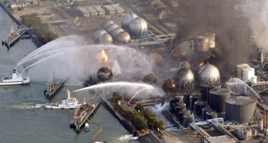 “Previously one of the world’s largest producers of nuclear-generated electricity, Japan has relied heavily on fossil fuels following the meltdown at Fukushima Dai-ichi and the subsequent shutdown of the country’s nuclear fleet. In 2013, when almost all of Japan’s nuclear fleet was shut down, more than 86% of Japan’s generation mix was composed of fossil fuels. In 2014, Japan’s nuclear generation was zero. The Japanese government anticipates bringing online a few nuclear facilities in 2015.”8
“Previously one of the world’s largest producers of nuclear-generated electricity, Japan has relied heavily on fossil fuels following the meltdown at Fukushima Dai-ichi and the subsequent shutdown of the country’s nuclear fleet. In 2013, when almost all of Japan’s nuclear fleet was shut down, more than 86% of Japan’s generation mix was composed of fossil fuels. In 2014, Japan’s nuclear generation was zero. The Japanese government anticipates bringing online a few nuclear facilities in 2015.”8
The Japanese are understandably concerned about public safety going forward. Unfortunately, they are very dependent upon the production of nuclear energy for power despite recent efforts to increase solar and wind power capabilities. In the aftermath of Fukushima, Japan intended to shut down their nuclear program altogether and revert to other sources of power generation. However, further study has shown that it is not economically feasible for them to forego nuclear completely.
As Japanese nuclear plants go back online, they will be modifying plant designs to avert future disasters. Newer facilities will be more passive and safe. The Westinghouse AP1000 is a reactor tailored to withstand disasters like the one Fukushima recently faced. Though it is not cost-effective for Japan to build new coal-fired energy plants or gas-fired facilities, Japan and Germany have been instrumental in developing supercritical and ultra supercritical coal burning technologies to make the process less expensive and more competitive.
Japan’s Electricity System Reform
Post- Fukushima, the Japanese Cabinet created the Policy on Electricity System Reform in April of 2013. This three-tiered policy focuses on broadening the operation of wide-area electrical grids, liberalization of retail markets and power generation, and legal structural separation bills for revision to the Electricity Business Act, which will be presented to the Diet in 2015.
The Policy on Electricity System Reform separates utilities from the distribution of electricity and creates a very different type of market than that of the US. In the interest of stabilizing the country’s energy infrastructure post-Fukushima, the Japanese government has imposed strict operational regulations for power companies instead of allowing these entities to compete against each other. At present, Tokyo Electric Power Company and Kansai Power Company provide nearly 98% of Japan’s electricity. Gaining access to their transmission lines is difficult and makes entrance into the market for new companies extremely hard.
In the US, incoming power producers can install a new plant and utilities are often required to buy the power that is less expensive than what they can make themselves. As always there is much debate amongst politicians, the energy sector, and the public about the relative merits of regulation versus deregulation of the power industry. In this instance, the energy sector is one place where government intervention can be useful in providing the billions of dollars it takes to capitalize and create the type of large-scale projects that can supply energy to millions.
In the future, Japan may pursue natural gas and combined cycle technology, utilizing turbines to generate power. The Land of the Rising Sun faces unique geographical challenges that factor into their strategies and decisions regarding energy. It remains to be seen how the regulation of generation, transmission, and distribution will affect Japan’s outlook in the years ahead. Similar regulations have been implemented in California to mixed results. Some major utilities were forced to sell off their transmission and distribution assets, creating a stressed situation with Pacific Gas and Electric, San Diego Gas and Electric, and Southern California Edison.
China and India Retain Nuclear Ambitions
 The 2011 nuclear incident in Fukushima crippled the massive construction plans of the nuclear power industry. Since then, however, many nations are once again embracing nuclear power as a still-viable and necessary means of energy creation in the 21st Century. The Xinhua news agency reports that China’s State Council just green-lighted two new reactors at General Nuclear Power Group’s Hongyanhe facility. The two units are being designed by the China General Nuclear Power Company (CGNPC). China will boost its nuclear capacity as high as 58GW by 2020 according to National Business Daily. There are presently 25 nuclear reactors being built in China. Some project that as many as 200 reactors could be built there in the next 20 years.
The 2011 nuclear incident in Fukushima crippled the massive construction plans of the nuclear power industry. Since then, however, many nations are once again embracing nuclear power as a still-viable and necessary means of energy creation in the 21st Century. The Xinhua news agency reports that China’s State Council just green-lighted two new reactors at General Nuclear Power Group’s Hongyanhe facility. The two units are being designed by the China General Nuclear Power Company (CGNPC). China will boost its nuclear capacity as high as 58GW by 2020 according to National Business Daily. There are presently 25 nuclear reactors being built in China. Some project that as many as 200 reactors could be built there in the next 20 years.
In India, negotiations have taken place with US nuclear interests concerning future construction of nuclear plants, but company officials are reticent to reveal specific details. It’s been reported that “the Indian government plans to triple domestic nuclear power-generation capacity by 2020-21.”9 Regardless of India’s nuclear ambitions or environmental considerations, they are still building coal plants which they need for economic reasons. They will actively add coal-fired generation while they continue to study ways of reducing the amount of pollution they are going to produce. Though they are using some natural gas, they are unlikely to shift to it solely unless it is absolutely critical that they do so.
Shale Gas, Fukushima, and the US Nuclear Policy
Nuclear policies in the US have definitely been more influenced by the advent of Shale Gas production than by any industry “fallout” from Fukushima. With gas-generated power available at less than $20 an hour, there is presently not much incentive to pursue nuclear. It also appears that the price of natural gas will remain low in the near future. This is not to say that utilities are not interested in having nuclear power in their portfolios, but the benefits are presently not worth the risk. For the present, combined cycle technologies are offering the best profit margins for utilities and shareholders. Natural gas production will continue to slow nuclear construction in the US, but in other parts of the world, it will proliferate.
The Ongoing Market Penetration of Renewables
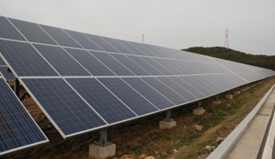 With coal-fired plants and nuclear power under attack for safety and environmental reasons, a growing interest in renewable energy sources has put fresh focus on wind, solar, biomass, geothermal, and hydroelectric sources of power. Of course, each of these has its drawbacks and present-day limitations. Europe has been leading the way in implementing green energy technologies, but renewables are presently unable to generate energy the way coal and nuclear can. Despite safety concerns raised by Fukushima, nuclear will definitely be part of the long-range global energy solution.
With coal-fired plants and nuclear power under attack for safety and environmental reasons, a growing interest in renewable energy sources has put fresh focus on wind, solar, biomass, geothermal, and hydroelectric sources of power. Of course, each of these has its drawbacks and present-day limitations. Europe has been leading the way in implementing green energy technologies, but renewables are presently unable to generate energy the way coal and nuclear can. Despite safety concerns raised by Fukushima, nuclear will definitely be part of the long-range global energy solution.
Much work has been done to obtain true “clean coal.” Still, green energy proponents believe that life cannot be sustained by continually releasing sulfur oxides and other pollutants into the air. Coal is readily available and inexpensive, making it a necessary alternative for developing countries, but the current trend towards natural gas and renewables shows the writing may be on the wall for coal in the long-term. While the political debate continues over climate change, the trend toward renewables and cleaner energy sources is in motion. The federal government has offered many IRS-administered, tax-based incentives to businesses in the interest of encouraging the deployment of renewable energy projects including the Renewable Electricity Production Tax Credit (PTC), and the Business Energy Investment Tax Credit (ITC).
Surfacing reports are claiming that rapidly advancing solar PV capabilities may soon derail the shale gas boom. “In a few years, solar energy plants will deliver the most inexpensive power available in many parts of the world. By 2025, the cost of producing power in central and southern Europe will have declined to between 4 and 6 cents per kilowatt hour, and by 2050 to as low as 2 to 4 cents.” These are the main conclusions of a study by the Fraunhofer Institute for Solar Energy Systems commissioned by the German think tank Agora Energiewende.”10
Nuclear, Coal, and the Clean Power Plan
The impact of the Fukushima Daiichi nuclear disaster in 2011 cannot be underestimated. Some nations such as Germany immediately issued a moratorium on future nuclear development. However, these countries have found that filling the capacity gap without atomic power is no small feat. Slowly, construction of new plants is ramping up in Ukraine, Bulgaria, China, the US, Great Britain, and elsewhere. Europe’s dependence on Russian natural gas is also spurring renewed interest in nuclear energy and biomass on the continent because political and economical issues have caused gas delivery to be undependable and economically unfeasible.
There is currently a demand for innovation in the nuclear industry. To that end, Generation Four reactors are being developed and several companies are working on small modular reactors which could well be the wave of the future. Though Fukushima may have slowed things down temporarily in the nuclear sector, there is more money being spent on research and development within the nuclear industry in the last five years than there has been in the last three decades.
At the UN Climate Change Conference in Copenhagen in 2009, the United States agreed to reduce greenhouse gas emissions to 17% below 2005 levels by 2020. As utilities work to meet the requirements of the Clean Power Plan, new nuclear plants are being built in the US and more are planned for the future, to fill the energy gap left by the phase-out of coal-based power plants. “According to predictions by the U.S. Environmental Protection Agency (EPA), almost 50GW of retirements of base load coal generation could occur between 2016 and 2020 due to the agency’s proposed Clean Power Plan. These expected retirements come in addition to the almost 70 GW of fossil-fueled generation that EPA acknowledges has retired or will retire sometime this decade due to other EPA regulations. Altogether, over 120 GW of installed capacity, or roughly 33 percent of all coal generation, is expected to retire by 2020, representing enough electricity to power 60 million homes.”11
Drivers for Coal-Fired Plant Renovation
From the inside, utilities have dual motivations when it comes to deciding what to do with existing coal-fired plants. The Clean Power Plan seeks a 30% reduction of the United States carbon footprint by 2030 and calls for states to greatly inhibit greenhouse gas production. To this end, coal-fired plants must be retired or be renovated. “States will have to present at least an initial plan by June 30 of 2016, but they’re allowed to choose from a variety of methods, from expanding the use of renewable energy to setting up market-based systems for carbon trading.”12 Many states may look at working with their state care quality regulatory groups to procure their plan in the interest of getting a tradeoff. They hope to be allowed to build natural gas facilities if they agree to retire coal. It’s a clear trend that’s occurring.
In many cases, coal-fired plants can be renovated with new clean coal technologies, but this process is often cost prohibitive, leading companies to build entirely new facilities instead. The EPA is definitely one of the strongest motivators for change within the US government and as their rules grow more stringent, they will continue to push coal out of the overall energy equation. Still, there is no denying that renewables are not there yet in their ability to meet global energy demands. Many feel the EPA is the main driver and catalyst for change, forcing most companies to look at either natural gas or nuclear power as alternatives.
Nuclear power is expensive to generate and poses risks to public safety, as recently highlighted by the Fukushima nuclear incident. Utilities do wish to keep nuclear power in their portfolios to maintain a degree of fuel diversity in the future. Shale gas production has been very lucrative, but the infrastructure for the transmission of natural gas is seen by some to be limited. In the long term, coal may be shut down unless effective carbon capture technology can be truly actualized. At present, it has not yet been commercially feasible at a large-scale power plant and demonstration projects have not been particularly successful.
Internationally, manufacturers and designers see proximity as a major driver in securing new contracts. In order for companies to be successful in places such as China and India, companies need to have boots on the ground there. But these countries aren’t interested in just importing energy; they want to create it for themselves, so manufacturers are relizing the importance of opening divisions and operations in large markets where clients are interested in eventually taking ownership
From an engineering perspective, everything nuclear depends on government policy which determines critical safety factors. Companies such as Areva, Westinghouse, Babcock and Wilcox, Adams Atomic, have to prove the safety of their products. The DOE will monetarily support projects they deem worthy, and an additional $25 million in government funding certainly helps when it comes to reactor research.
Small Modular Reactors Offer New Energy Solutions
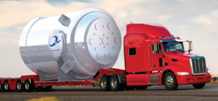
“Reactor designers are developing a number of small light-water reactor (LWR) and non-LWR designs employing innovative solutions to technical nuclear power issues. These designs could be used for generating electricity in isolated areas or producing high-temperature process heat for industrial purposes … The U.S. Nuclear Regulatory Commission (NRC) expects to receive applications for staff review and approval of small modular reactor (SMR)-related 10 CFR Part 52 applications as early as late-2015.”13
Some smaller countries like Malaysia and Indonesia don’t have the transmission grid infrastructure or the space to support large-scale nuclear facilities. SMR’s (small modular reactors) provide a workable solution in situations like these. SMR’s could also help Great Britain with their low-carbon commitments and assist them in raising their grid capacity. New SMR designs are also being deployed in the United States, Japan, and in many developing nations around the globe.
Many in the industry are quite optimistic about the future of SMR’s. Various versions have been in use in the nuclear industry for some time and several companies such as New Scale and SCAMU are currently working on developing them further in the interest of being licensed by 2020. The next step would be finding customers who are willing to purchase them. SMR’s are built in modular form at a factory and are transported to their site of deployment. Though they do provide ease of operation and a compact design, maintenance and high security measures are still required.
Nuclear Waste Management and Yucca Mountain
One insider characterized nuclear waste management in the US as “a mess,” and blamed it on politics. It is true that typical right and left rancor has hindered a decision regarding the establishment of a centralized disposal location. Today, most utilities are dry-cask storing their waste on their own sites as there is no specified national depository for the disposal of nuclear waste. Nevada’s Yucca Mountain has long been considered as a preferred site for such a depository, but public and political resistance to the project has kept it inoperative thus far. A majority of Nevada’s citizens oppose the site for safety reasons such as radiation emission; this despite assurances that any exposure to radioactivity would be well within the established limits of safety.
In August 2013, the U.S. Court of Appeals for the District of Columbia ordered the Nuclear Regulatory Commission to either “approve or reject the Energy Department’s application for [the] never-completed waste storage site at Nevada’s Yucca Mountain.” The court opinion said that the NRC was “simply flouting the law” in its previous action to allow the Obama administration to continue plans to close the proposed waste site since a federal law designating Yucca Mountain as the nation’s nuclear waste repository remains in effect.” 14
Major Players in Turbine Manufacturing
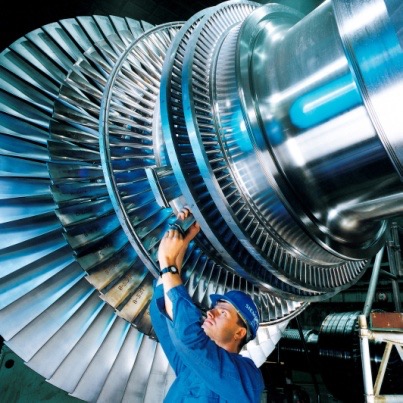
Turbine-based generators and engines are projected to generate $162 billion in sales on the world market in 2016. This reflects an annual increase of 6.4%. The largest growing sector is wind turbines. An escalating demand for gas turbines is also evident in the international marketplace.
GE, Siemens, Alstom, Mitsubishi, Hitachi, and Solair dominate today’s turbine manufacturing industry. These firms tower over the competition when it comes to gas, steam, turbines, and boilers. GE is believed to have a larger gas turbine market share. Their planned $15.6 billion purchase of Alstom SA includes that company’s highly regarded heavy duty gas turbine business. Combining nuclear, coal-fired, gas turbine, or hydroelectric, GE is thought to produce about 25% of the world’s energy. If it goes through, the merger of GE and Alstom is sure to change the face of the market share and enlarge GE’s international footprint.
Throwing a wrench in the works, “the European Commission is to undertake an “in-depth” investigation in to the GE-Alstom merger to assess whether it breaks competition rules. The inquiry will take 90 days with a final decision expected on August 6th, 2015.”15 The Commission has expressed concerns that diminishing the field of competition in gas turbines might lead to increased prices, less innovation, and fewer options for customers.
Meanwhile, 2014 Mitsubishi and Hitachi merged to form Mitsubishi Hitachi Power Systems, Ltd. (MHPS). “First announced on November 29, 2012, the two firms have transferred their respective global thermal power generation operations into a new joint venture through a company split where MHI now holds a 65% equity interest and Hitachi holds 35% in the new merged entity.”16 The merger provides both companies with a larger portfolio of energy commodities and available solutions.
In global steam turbines, Siemens has a market share of 4% in annual sales. Larger interests in steam are Bharat Heavy Electricals of India (BHEL) at 18%, Toshiba with 10%, and Harbin Electric of China with 7%. Assessing 2015 sales figures, Siemens Chief Executive Joe Kaeser has said that gas and power need “a more comprehensive concept to return to historical margins longer turn.”
The Urge To Merge
China Power Investment Corporation is reportedly merging with the state nuclear power technology corporation. At the same time the China National Nuclear Power Corporation is merging with China General Nuclear Power. These mergers should give these entities the financial strength needed to go global. In the US, the DOE backs up some of the loans for new nuclear plant construction, but China needs financial strength to leverage itself in a global marketplace. China hopes to compete and eventually lead the nuclear industry globally as they build more reactors and gain more technology. They spend more on nuclear than any other country in the world. US-based Progress Energy merged with Duke Energy in 2012 making Duke Energy the largest electric utility in the country when generation capacity, customer count, and market capitalization are factored in.
The AB1000, EBWR’s, and the Nuclear Outlook
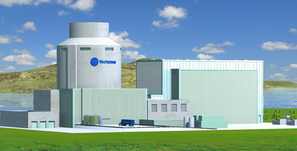 General Electric’s experimental boiling water reactor (EBWR) is being created for nuclear application and it is reportedly advancing well design-wise and should be ready for commercialization soon.
General Electric’s experimental boiling water reactor (EBWR) is being created for nuclear application and it is reportedly advancing well design-wise and should be ready for commercialization soon.
The industry leader at the moment is a reactor designed by Westinghouse in the ‘80’s that was originally called the AP600. This unit was made bigger and was eventually named the AP1000. These are being built in Savannah, Georgia in tandem with CB&I (Chicago Bridge and Iron). The AP1000 is a pressurized water reactor that incorporates an older style EBWR designed by GE that requires extra power to maintain its cooling systems and to shut the reactor down in the event of a problem. Referring to the Fukushima nuclear incident, technicians there did not have backup power from diesel generators. Because of this they were unable to cool the plant down and disaster ensued.
The Westinghouse AP1000 design features a passive system that utilizes gravity and thermal convection to shut the plant down even in the absence of available external power. The units being built now by Southern Company are the first being built in the US for 30 years and are said to be “Fukushima Proof.”
At the same time, Toshiba is building a steam turbine generator that is very competitive in terms of its efficiency in utilizing a nuclear steam source. Westinghouse and Toshiba will go head-to-head on the market promoting their reactors. Some feel Westinghouse has the edge with a superior water reactor design and a significant lead in terms of winning orders nationally and internationally. They have done a lot more of the advanced engineering and standardization of design so that applying for an operating license will be simpler and less costly; something that appealed to China’s State Nuclear Power Technology Corp (SNPTC).
Both companies are going to the UK, Bulgaria, China, and India; virtually anywhere they can to sell the AP1000 or EDWR reactors. Of course, for many years Toshiba’s nuclear business was the key element of the company until Fukushima shut down all of their domestic nuclear reactors, many of which have not been re-started. It is still a very strong part of the company, not so much from a business standpoint as a cultural one. They will continue to be strongly supported by Toshiba’s senior management. This is a crucial moment for the nuclear power industry and the next five or ten years will be pivotal in seeing where it will lead. Some feel small modular reactors are the future and anticipate some large companies leaving the nuclear business or entering different markets.
Understanding the Energy Value Chain
“According to the US Energy Information Administration, total domestic expenditures for energy services are expected to grow from approximately $1.2 trillion in 2010 to over $1.7 trillion in 2030. Growing consumer demand and world class innovation, combined with a competitive workforce and a supply chain capable of building, installing, and servicing all energy technologies makes the Unites States the world’s most attractive market in the $6 trillion global energy sector.”17
Where’s the money? In examining the value chain of the energy business, some areas stand out as more lucrative than others. The gas turbine combine cycle may well be the best moneymaker because the investment cost for installation is still quite competitive. In the US market, merchant suppliers of electricity are competing with other suppliers based on what it costs to deliver an incremental megawatt into the market. This variable production cost is basically a calculation of the fuel cost and the cost of converting the fuel into electricity.
Nuclear is at the low end of the curve in terms of variable production costs, but the capital investment required to install nuclear is astronomically high. Right now, there are many combine cycle units being put together because the conversion of natural gas fuel to electricity in combined cycle power plants is inefficient. The capital cost is predictable and understood. Today there is a huge shift to combined cycle as utilities look to take advantage of the low cost of natural gas and to be more competitive in the electricity market. Again, the next few years will determine where the most profitability will lie. Reactor technology is very lucrative but it takes billions in investment capital. If developers sell that technology they can make a lot of money, if they don’t, they can lose a lot of money. Waste management is expected to be extremely profitable in the years to come. Manufacturing looks to be profitable as well, but most of this will probably occur overseas.
Uranium prices are presently low enough that once a nuclear plant is operational, the cost of converting uranium fuel to electricity is extremely competitive. The risk factor in the nuclear market comes from the possibility of something happening that makes the price of uranium spike. A nuclear plant is only slightly more expensive than a hydroelectric plant when it comes to the cost of producing power, so nuclear is cost-effective if uranium prices remain stable.
Bundling and Long-Term Service Contracts
 The Chinese have recently offered financial support to convince potential energy clients to sign contracts. Other companies prefer to bundle the sale of equipment with a long-term service contract. What are the key success factors to developing new business in various locations? Many in the industry feel that it’s important to package long-term programs and services, and many big players in the energy sector are already doing that. Owner/operators in the US are often not as dependent on those types of services, but globally long-term service contracts are more common. This is why it is important for domestic energy companies to have a physical presence and relationships with international clients who need remote service. Once familiarity is achieved with new technology, it’s possible that these clients will no longer require the service contract.
The Chinese have recently offered financial support to convince potential energy clients to sign contracts. Other companies prefer to bundle the sale of equipment with a long-term service contract. What are the key success factors to developing new business in various locations? Many in the industry feel that it’s important to package long-term programs and services, and many big players in the energy sector are already doing that. Owner/operators in the US are often not as dependent on those types of services, but globally long-term service contracts are more common. This is why it is important for domestic energy companies to have a physical presence and relationships with international clients who need remote service. Once familiarity is achieved with new technology, it’s possible that these clients will no longer require the service contract.
Purchasing decisions in the US are usually based on price and performance as opposed to extended maintenance plans. It is understandably a very competitive market. Japanese firms such as Hitachi often require no payments until a plant is completed; like a retail store might do – no interest, no payments, until the work is done. In Europe, it is not uncommon for purchasers to buy packages and continue relationships with Siemens or Alstom. Financing packages usually apply to less sophisticated owners or people who have more familiarity with finance than the actual operation of a plant. More technologically advanced companies want to operate their facilities themselves and make key buying decisions regarding whose parts they buy and what they pay for them. Primarily, such decisions are based on economic factors.
To ride out the recent economic downturn, many companies have sold at zero-profit or even at a loss, promising their clients that they would maintain their capability and train their personnel. Things were structured for the purpose of obtaining maintenance contracts and securing market share. Historically, OEM’s have had the advantages, but some of that may be going away as markets mature.
Where Are We With Carbon Capture Technology?

Carbon capture technology was originally used to improve gas and oil recovery, but in recent times it is being deployed for environmental reasons. Fossil fuel-powered energy plants are responsible for most CO2 emissions. In the future, improved carbon capture methods should enable the trapping and safe storage of CO2. Today, trapping it is expensive. It’s been estimated that capturing the CO2 from a 500-megawatt plant would require a $400 million separation facility. Additionally, the energy required to run the catalytic separator can consume one-third of the energy a plant produces. This economic picture is not bright. Some have mentioned subsidization, Cap and Trade, or regulations which might motivate people to reduce CO2 emissions. New technology is ultimately needed that can replace catalytic separation plants and so far, proposed carbon capture concepts have proven to be too expensive.
People are working on the problem. Babcock and Wilcox, for example. There are technically doable plans, but again, they are cost-prohibitive. Beyond the economic hurdle, keeping CO2 safe in storage is imperative as any occurrence of failure can cause serious health and environmental problems. The high cost and storage problem aspects of carbon capture lead many utilities to look again at nuclear as possibly the best long-range global energy solution. In the final analysis, carbon capture technology is in its infancy and more data and research will be needed to analyze its risks and benefits.
“UC Berkeley chemists have made a major leap forward in carbon-capture technology with a material that can efficiently remove carbon from the ambient air of a submarine as readily as from the polluted emissions of a coal-fired power plant. The material then releases the carbon dioxide at lower temperatures than current carbon-capture materials, potentially cutting by half or more the energy currently consumed in the process. The released CO2 can then be injected underground, a technique called sequestering, or, in the case of a submarine, expelled into the sea.” 18
Supercritical vs. Combined Cycle – Weighing the Options
Supercritical and Ultra Supercritical technologies burn coal under pressure at extremely high temperatures to obtain efficient energy production and greatly reduced CO2 emissions. In addition, combined cycle plants release far less sulfur dioxide and nitrogen oxides which negatively impact air quality. Ultra supercritical units being developed in Denmark, Germany, and Japan, should be able to operate with even more efficiency and bring down the cost of fuel. High alloy steels which inhibit corrosion could lead to a rapid increase in supercritical and ultra supercritical application in the near future.
IGCC (Integrated Gasification Combined Cycle) technology “uses a coal gasification system to convert coal into a synthesis gas (syngas) and produce steam. The hot syngas is processed to remove sulfur compounds, mercury and particulate matter before it is used to fuel a combustion turbine generator, which produces electricity. The heat in the exhaust gases from the combustion turbine is recovered to generate additional steam. This steam, along with that from the syngas process, then drives a steam turbine generator to produce additional electricity.”19
Economically speaking, supercritical coal plants are competitive when the price of natural gas is about $5 per million BTU. At present, the projected price of natural gas in the US is $3 to $4 per million BTU. So, even if there weren’t concerns about CO2 emissions, it would be financially reasonable to build a combined cycle plant. This is why new coal-fired plants are generally not being constructed except in India, China, and Vietnam. Brazil and Chile were recently interested in developing new coal-fired plants, but improving combined cycle technology has caused those nations to abandon any coal-fired ambitions. This same attitude is pervasive in most countries around the world.
Natural Gas Price Projections
Natural gas prices are projected to stay in the $2.50 to $4 per million BTU range in the next 10 years. However, if this were true, it would seem that more plants would be converting to combined cycle technology and the current market reveals that they are not. Some utilities are using the strategy of maintaining some coal-fired utilities as a “hedge” against natural gas price fluctuations. For example, problems in the Ukraine could cause natural gas prices to escalate in Europe to 4$ to $6 per million BTU. In such an event, the US might put it on ships and send it there. Utility executives are often reticent to make big decisions regarding changes in the interest of preserving their jobs.
Many of those who expect natural gas prices to remain as low as they are believe that those prices will come from a continuation of present day extraction technologies. But, the companies who employ these methodologies claim they cannot continue to profit with shale gas prices as low as they are. Exxon Mobil’s CEO said last year, “We are losing our shirts” selling natural gas at such low prices. Forecasts for much lower oil prices would also represent losses on new wells for most oil producers.”20
So, while there is some conversion to combined cycle, there has not been a 100% commitment to it. The pendulum may be swinging in favor of natural gas, but utilities like to maintain some flexibility to “switch back” if it is needed. Meanwhile, there are more mergers continuing to happen and there are fewer and fewer utilities, a trend that look as if it might continue.
The Advantages of the Asian Manufacturers

Asian nations have the advantage of being able to offer financing with their products. Though Asia is advancing rapidly, the US still holds a technical advantage over Asian manufacturers. China typically has a clause in their contracts with Western companies which demands technology transfers, so they have always been adept at gathering technological information from their suppliers that they apply to projects in China. Their ability to manipulate their currency is perhaps their biggest strength. On the downside, some in the US have a negative impression of Chinese companies, feeling that they don’t follow-up well with technical or warranty issues. Owners may have problems later on with transformers and other types of large equipment.
China and India do have the ability to make their own boilers. Initially they borrowed their designs and licensed technology from dominant companies such as Babcock and Wilcox and Alstom, but as time has gone by Chinese and Indian companies have developed the capability to make their own boilers with their own technology. Many Asian manufacturers have agreements in place where they don’t have to pay royalties if they incorporate someone else’s design. If a company is in the market for a new boiler and they solicit bids, they may end up purchasing it from a Korean company that is incorporating a design originated in the United States. Many Western firms won’t even offer bids to a prospective client if they know a Chinese or Indian manufacturer is also bidding because they cannot compete pricewise.
Most of the fabricated boilers and boiler parts today come from China or Vietnam, where work is often outsourced as not many companies make these products in the US anymore. Europe is still able to produce some things competitively, but China is the go-to for cost-effectiveness. Even Hitachi and Mitsubishi include materials which is outsourced from China in order to be competitive. Despite the possibility of repercussions down the road, large capital enterprise interactions with Chinese firms often involve joint venture agreements which stipulate that a transference of technology must take place over time. In the not too distant future, the Chinese will be able to produce the same technology without involving a capital partner. Of course, the Chinese market is massive, so Western industries are quite anxious to penetrate it, but this is not without some potential cost to future sales. Offering capital incentives in various regions, packaging services, packaging order volume; if ten units could be sold at a slightly lower price point to Chinese clients it is very attractive to them.
As was mentioned before, many Asian companies have licenses to utilize Western technologies. Korea and China use boiler designs from manufacturers such as Foster Wheeler, Babcock, and Alstom. Until recently, these countries have often used technologies that are a generation behind and they were able to compete well because the software was safe and had been around for decades. The Chinese have their local markets and low manufacturing prices, but their technology has traditionally come from Western designers. India is seen by many as particularly fast-rising. Their excellent grasp of technology may elevate them over others on the basis of reliability, efficiency, and reference plans. For now, the advantage held by Western companies is based on higher technology and better manufacturing control, but it may not stay that way for long as Asian companies are growing more and more technically proficient and capable.
In the US, those in the nuclear market are extremely cautious and risk averse. Chinese technology is sometimes viewed as immature. International clients are confident that US and Japanese manufacturers will offer technical support for the life of the units they make, but they don’t feel the same way about Chinese manufacturers. Thusly, they are quite cautious about making big technology purchases without feeling confident that they can be supported for the 40 to 60 year life of a power plant. North America and Europe are more mature markets. Most of what’s needed there are replacement parts and service. Asian suppliers may be able to fill these gaps as commodity parts are often not so sophisticated and don’t require OEM drawings. The main competition will be for parts and components.
Hinkley Point C and the Chinese Controversy
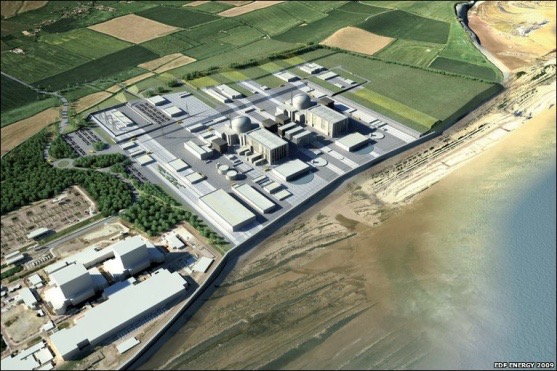
The Hinkley Point C project in the UK has generated its share of controversy. Designed to bring two new reactors to the northern Somerset Coast in England, it is the first “new generation” nuclear facility in the UK. The project promises to provide work for 900 people with 25K potential jobs during construction over the next decade. Businesses are bidding for £16 billion which will be invested in building the project. Aside from predictable environmental and public health concerns, there have been worries about China’s involvement in Hinkley Point.
An EDF executive has confirmed that the company is confident of an investment deal on the Hinkley Point project in England by the end of March. “In principle, everyone’s on board,” Song Xudan, chief executive for EDF in China told the Financial Times. … The £24.5bn nuclear power project represents the first overseas venture for China General Nuclear Power Corp, which has negotiated for Chinese companies to get a share in supplying components to the project.”22 The Chinese also want a big share of supply contracts and ownership of another nuclear site in Bradwell where they+ have intentions of building their own nuclear reactor. These demands have hampered ongoing Hinkley Point negotiations.
Cost savings are certainly a huge factor for the UK as they negotiate with China. Some feel financial considerations often play a larger role than they should when it comes to these types of decisions and that politicians might buy in on Chinese technology earlier than they should for the sake of political expediency. It is not believed that China will immediately pursue deeper involvement with projects in developed nations. Rather, they will likely focus on emerging markets where cost heavily influences decision making. The global nuclear community is small, so everyone will be watching to see how things transpire as they always do with new power plants.
Cost, Quality, and Risk Aversion Influence Buying Decisions
Decisions regarding nuclear plants vary from country to country, depending on economic and quality concerns. Emerging nations are more likely to seek cost-effective solutions and be less inclined to deal with larger, more established companies who charge more for their services. Of course, governmental regulations also influence the choice of which companies receive business.
Risk aversion also plays a large role in the buying propensities of nations interested in obtaining nuclear power plants. The US is considered to be particularly sensitive to risk. This may be because of NEIL (Nuclear Electric Insurance Limited), “a mutual insurance company which insures all nuclear power plants in the United States as well as some facilities internationally. The company is based in Wilmington, Delaware, and is registered in Bermuda. It was founded in 1980 in response to the 1979 Three Mile Island accident.”23 Responsible for a payout to Florida’s damaged Crystal River nuclear plant, Progress energy was initially seeking a $1.9 billion settlement that sent shockwaves through NEIL’s member companies. The dispute was eventually settled for far less; $835 million, but the incident has had lasting effects, generating risk aversion in the industry that still lingers today.
Internal/External Maintenance Decisions
For some companies, profit in the nuclear industry comes from operation and maintenance contracts. Businesses such as URS and others work on a low margin basis. They don’t make astronomical profits, but they generate respectable revenue at no margin. Smaller companies generally don’t have the manpower to undertake the maintenance of major inspections themselves, so they have to contract the work from without. Entergy has gone from doing everything itself to forming some alliances with manufacturers. They are able to maintain a core competency group which can manage the work that’s done for maintenance during refueling cycles.
In the U.S., utilities exist in two categories: either merchant plants such as those Exelon maintains, or regulated utilities like Duke that has to justify costs and get a reasonable rate of return from the regulatory agencies on those expenses. In Germany, they basically just have to explain their costs, so they’ve got more of a protected market there. They can do a portion of the labor themselves and it’s easier for them to confirm their costs. So, it depends upon how the market is structured and what kind of a generational environment the utility company is in.
China – Licensing and Intellectual Property Rights

In most instances, Chinese manufacturers have licenses to sell American products, but these licenses provide that products may only be sold in the countries they are manufactured in. Some claim that Chinese firms have been attempting to sell licensed equipment to other countries and that China will only respect intellectual property rights when they have gotten to the point of developing their own intellectual property worth protecting.
There is also skepticism regarding the quality of Chinese products that still exists today. Many US firms outsource parts manufacturing to China and there is continuous concern about the integrity of those products. Some companies send representatives to China to observe Chinese fabricators around the clock, making sure they don’t take shortcuts. This might include substituting inferior materials, doing incorrect welding, or otherwise not correctly following designated procedures. Even today, Chinese manufacturers have had a difficult time in shaking their reputation of cutting corners at the risk of safety and/or performance.
Ultimately, China will acquire the necessary technology and know-how to compete on the world stage with manufacturers such as Westinghouse, GE, and Toshiba. In some markets they will even dominate. While the US may presently be risk averse concerning Chinese products, other nations will look to China because they are cost-effective. They will also appreciate the fact that China has licensed technologies, ot they have been part of technology transfers with respected Western companies. Some feel that once a technology is turned over to the Chinese, no company is going to be able to control Chinese innovation or how they manufacture their products.
Will Chinese Joint Ventures Continue?
There are many research centers throughout India and China today which involve joint ventures between those nations and various Western companies. This type of international technology sharing and diversification will continue. As for China, they are still technologically behind, but they are making up ground. It’s generally felt that they will catch-up in the next five to ten years and may well go it alone. Much of this will depend on whether Western interests continue to bring value to joint ventures with the Chinese. If this does not occur and Western firms just want money, it’s unlikely that the joint ventures would move forward.
Ultimately, “China wants to maximize self-reliance on nuclear reactor technology, manufacturing, and design, although international cooperation and technology transfer are also encouraged. Advanced pressurized water reactors such as the ACPR1000 and the AP1000 are the mainstream technology in the near future. By mid-century fast neutron reactors are seen as the main technology. More long-term plans for future capacity are 200 GW by 2030 and 400 GW by 2050. Fast neutron reactors are planned to contribute 1400 GW by 2100. China is positioned to become a reactor exporter, through development of the CPR-1000.”24
Much will depend on the financial performance of Asian companies as to their future success in the global nuclear marketplace. At this time there is still a good deal of uncertainty. Overall, however, there is a feeling that nations of the Pacific Rim and the BRIC countries (Brazil, Russia, India, and China) will be fundamental components of the industry growth expected in years to come.
Why India?

Many see India as an engineering center that inspires confidence. If a major manufacturer is seeking a low-cost center and elects to place an engineering office in Calcutta, then a competitor elects to launch a facility in Calcutta, they’ve already got a relatively skilled workforce in place that they can obtain talent from. However, when a third company comes along and decides to set up shop there, within five or six years they find that what had been a low-cost production center now has labor costs that approximate those of the US and Europe. This is especially true if one factors in the cost of doing business in those regions. The advantages begin to erode. Similar situations have occurred in Budapest and Delhi. It may be the nature of the business. Some speak of onshoring jobs again; bringing them back to the United States, as over time the advantages of globalization and low-cost offshore centers have eroded. If this fact isn’t evident today, it will be much more recognizable in 25 years.
Some investors have been disappointed that the build-out in India hasn’t been as extensive as was hoped for. China still continues to dominate in that part of the world. India has the disadvantage of no ready supply of natural gas, which makes them dependent upon indigenous fuels, nuclear, and most importantly, coal.
Keeping it Local
In Certain countries have local content requirements to ensure they are not exploited and jobs and labor stay in their country of origin. This situation is often addressed through joint ventures. In India, local companies tend to get the contracts for new orders. Thusly, outside interests need to partner with local interests in order to be successful in bidding. In the Indian market there are some large-scale boiler companies that that have licensing agreements with US-based companies. The in-house Indian boiler companies are very hard to beat, so there could be an opportunity for a company to take a chance and bid against (for example) Bharat Heavy Electricals –BHEL – as some companies have done. Of course, India is very attractive because labor costs there are extremely low and the cost of getting to market is inexpensive.
Looking Further into Joint Ventures
The merger of GE and Alstom continues to inspire fascination in the nuclear sector. There had been conjecture that GE never wanted to be in the boiler business because their marketing outreach was more effective with steam turbines. Others felt that GE was interested in partnering with someone in the boiler business or in buying another company altogether. Ultimately, GE would resist these impulses in the boiler business for fear that there was not enough profit in the idea.
In the end, all mergers are based on the bid; who’s buying and what are they buying? What are the evaluation factors? Of course, these types of assessments concerning strategy are difficult to make on a macro level. Ironically, alliances may work for one project, yet on the next project an ally may become a direct competitor. It seems no one company has everything. They all have their strengths. Most see this is an important and healthy aspect of the business.
Babcock and Wilcox Spin-Off
“ … Energy services provider, The Babcock & Wilcox Company … took a preliminary step in its plan to spin off its Power Generation business. Babcock & Wilcox Enterprises Incorporated, a newly formed subsidiary that will consist of the company’s power generation business, has filed an initial Form 10 Registration Statement with the U. S. Securities and Exchange Commission (SEC). Industrial Info is tracking $5.69 billion in B&W projects at power facilities fired by coal, natural gas and waste, and $10 million in projects at a nuclear fuels plant that supplies the U.S. Navy.”25 There is speculation that this spin-off could precede a coming consolidation with someone else, and if it does, it would follow a trend that has already been happening elsewhere in the industry. The decision is likely part of B&W’s business development strategy as they have a 50-100MW nuclear plant they are trying very actively to market.
Development of nuclear products is still a relatively new undertaking for B&W. The jury is still out on whether they can be successful with their smaller nuclear plant. Right now, the only utility that appears to be seriously looking at it is TVA. Their generation is presently in the neighborhood of 30 thousand megawatts and the unit being discussed is only a 100mw unit. In a sense, TVA is helping B&W to see if the technology is viable. A smaller plant is inherently less dangerous when it comes to nuclear-type designs and is a lot less susceptible to problems with radiation leaking into the air, ground, or water. At this point in time in US history, it’s a brand new business venture that’s entering the market at a time when people are looking to natural gas as the dominant energy source for the foreseeable future.
If shale gas prices stay near $2 per million BTU for the next decade, most new construction will be centered around natural gas plants. If those prices go up to $8 per million BTU, utilities will need to decide between coal, carbon reduction, and nuclear power generation. Down the road, nuclear may indeed be the ultimate answer as it would be more viable if gas prices eventually escalate. Insiders speculate that such decisions are probably 10-12 years down the road. Meanwhile, the Southern Company is in the process of adding two nuclear units to its fleet. Initially they had planned on four, but costs proved to be higher than expected. They’ve been building nuclear, combined cycle and coal plants, all the while being careful to balance their portfolio. If energy prices were to fluctuate, nuclear production is fairly predictable because most of the cost associated with it is in building the plant itself. The fuel costs are very small, so once a plant is up and operational production costs for nuclear energy are quite low.
Toshiba and Westinghouse Share Nuclear Ambitions
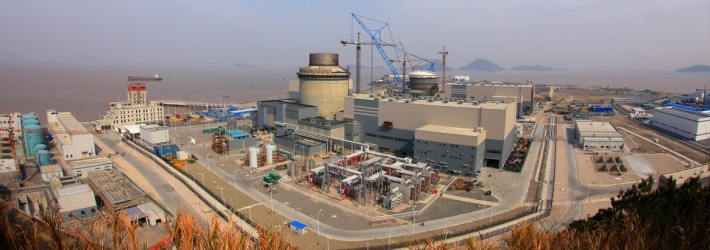
In 2006, things were looking up in the nuclear power sector. Toshiba elected to team up with IHI Corporation to buy Westinghouse for a reported $5.4 billion. Following this, Toshiba had to part with another $1 billion to secure a controlling interest in Westinghouse when Marubeni Corporation got cold feet and wanted to pull-out, threatening the deal. Since that time, the nuclear incident at Fukushima has caused potential investors to at least temporarily turn away from nuclear power. Obviously, Toshiba did not anticipate such a turn of events and they believed that nuclear reactors would be at a higher peak than they presently are.
On January 22nd, 2015, Toshiba entered into negotiations to provide equipment for many Chinese nuclear reactors and additional plants in Kazakhstan. “Toshiba already has a leading position in the Chinese nuclear power market and is looking to build on this through its Westinghouse Electric unit. Emerging economies are increasingly looking to nuclear power as a way to curb carbon emissions, which contribute to global warming, although a plunging oil price could change some of those incentives in the long term.”26
Meanwhile, Westinghouse has been eager to deliver reactors for a prospective plant in Gujarat, India in the wake of progress that has been made regarding the Liability Act. Now that a deal is operational between the U.S. and India, Westinghouse is exploring the possibility of supplying components to Gujarat while circumventing Toshiba, their holding company in Japan. Due to the India-Japan civil nuclear deal, Toshiba cannot be involved in the transaction.
Westinghouse refers to its AP1000 PWR as “the safest and most economical nuclear power plant available in the worldwide commercial marketplace.”27 They tout its unparalleled reliability, efficient design, and competitive cost. The AP1000 was the first generation three reactor for the DOE and was considered to be at the pinnacle of technological design when it was initially licensed. It is still thought of as one of the most high-end level reactors in the world. The AP1000 is not without its detractors. In 2010, several environmental organizations called for an investigation into what they believed were weaknesses in the reactor’s containment design. John Ma, a senior structural engineer at the NRC also posited that portions of the reactors steel skin were susceptible to the impact of a plane or projectiles propelled by storms. Westinghouse experts disagreed.
More Companies Combine Forces
The trend towards industrial consolidation is set to continue in the global energy sector. GE has coupled with Alstom. Mitsubishi and Hitachi have joined forces. Germany’s Siemens has recently followed suit with some chess moves of its own. In 2014, they acquired Rolls-Royce’ energy business and then merged with Dresser-Rand Group, an international supplier of aftermarket parts, services, and equipment solutions. The deal was worth an estimated $7.6 billion. “Siemens intends to operate Dresser-Rand as the company’s oil and gas business retaining the Dresser-Rand brand name and its executive leadership team. In addition, Siemens intends to maintain a significant presence in Houston, which will be the headquarters location of the oil and gas business of Siemens.”28
Some believe Siemens is hoping to profit from the booming US oil and shale gas market while giving its energy business rival, GE, some competition. GE has a monolithic presence in the US market however, so Siemens will be playing catch-up in the foreseeable future. GE has put more than $14 billion into gas and oil since 2007. Siemens is a bit late to the dance, but their $1.3 billion acquisition of Rolls-Royce’ power business in May of 2014 was done in hopes of closing the gap with GE. It’s hard for companies to put their feet to the street by themselves. Regardless of a firm’s patience or ability to maintain a long-view, partnerships have become the rule of the day. In China it’s a no-brainer. In other Asian markets, it’s beyond difficult for companies to grow business organically.
Consolidations and Confusing US Energy Policy
Some consolidations are entered into with shale gas production in mind. But, the steam turbine segment doesn’t just depend on gas to be profitable. If there is a coal build-out, or if nuclear comes back into vogue, most companies will still provide products for those fuels. In the gas turbine business, most companies that are looking for optimal efficiencies are going to have a bottoming cycle with a steam turbine on it. In this way there can be a combined cycle with gas turbines and steam. Most OEM’s and their partners are trying to sell combined cycle technology rather than simple cycle.
Many in the US, Europe, and around the world are confused about the lack of clarity in US federal energy direction which seems to consist of “a hodgepodge of disconnected policies designed for specific constituencies with no coherent goal.”29 The US has energy subsidies for nuclear, wind, solar, and fossil fuels, as well as subsidies for retrofitting buildings. Yet to be defined is the US end goal and the timeline for getting there. While these issues are being deliberated, the global energy market will continue to be market driven. The demand for electricity will continue to grow as long as information systems and computing systems continue to expand. The questions now are how will these growing demands be met and who in the industry will meet them?
Japan: Beyond Fukushima

Still, Japan is formidable. They have their cost structure down to be competitive with the Chinese in energy equipment and to some extent with the South Koreans. Japan understands the value of being able to wrap an entire power package together and with project financing, they have won jobs. They have a good competitive strategy but Japan is not in the best relative cost position at the moment. Still, they can figure out how to win. The technology and equipment Japan has makes them a good prospective partner for companies in developing countries.
Market Shares and the Probability of Profitability
In understanding the profitability of companies in the global energy sphere, it can be difficult to uncover actual market shares and profit levels. Even ballpark figures are elusive because they are all very carefully protected, and for good reason. The competition is fierce. Insiders claim that profit levels for new equipment are ridiculously low for everyone, so no one is making money in that regard. Instead, they are looking to increase their market share, increase their installed feed base, and then profit on providing services over time. In this way, factories stay busy, people stay employed, and market share improves as companies slowly expand. It’s been said that no one is profiting to a great degree. Numbers in the new unit market are probably less than 10% for most suppliers in net profit.
Some believe the money is in maintenance; supplying operational services, replacement parts, and spare parts. These things have consistently provided a better margin for many years. Looking at the market in its entirety, it does make a lot of sense at the moment because prices are so competitive. The risk of project issues unexpectedly driving up costs is so high that many companies are often focused on just remaining in business in the present market.
Building Relationships with Suppliers

The industry as a whole is thought to be in a learning curve, rebuilding the knowledge base, the supply chain, and virtually everything else on a global scale. Companies can benefit from staying with specific suppliers who deliver consistent quality and price. It’s also important to know that a supplier will be available over the long-term during an extended construction project. In time, suppliers will improve allowing companies to hand pick their suppliers from a pool of proven entities. The National Regulatory Commission (NRC) is also there in the US to “prevent the use of counterfeit, fraudulent and suspect items. Their programs include careful supplier selections, effective oversight of sub-suppliers, and the authority to challenge a part’s “pedigree” when necessary.”31 The NRC inspects nuclear power facilities and vendor production sites. They disseminate information and provide guidance to nuclear interests.
Russian Reactors in Singapore and Budapest
In 2012 the Rosatom State Atomic Energy Corporation (ROSATOM) opened a marketing office in Singapore. ROSATOM is a Russian non-profit state corporation in Moscow and is the regulatory body of Russia’s nuclear complex. Their intent is to promote Russian nuclear capabilities while developing business in Australia and Southeast Asia. “The plans of nuclear power development in South East Asia and Australia imply construction of up to 15 reactors until 2030 that makes this region one of the most promising ones for the development of ROSATOM’s business,” Alexey Kalinin, Director General of ROSATOM Overseas, noted.”32
This part of the world uses a lot of Westinghouse technology, but Russia obviously feels emboldened to compete with them. Some feel that Russia may not have the technical know-how to operate in Singapore and that the skilled labor they need may not be available there. It’s a turnkey situation where Russia would build and operate the reactors. Singapore pays and Russia gives them energy. Can Russia do the job cheaper than the Chinese? It remains to be seen. Until the reactors are complete, it would be hard to calculate costs. Price can be speculated upon, but much can happen in the interim to alter the final figures.
More recently, reports indicate Russia issued a 10 billion Euro loan to Budapest for the expansion of Hungary Paks nuclear energy facility. This has brought about accusations that Russia is hoping to gain political influence in the EU by its actions. In late March of 2015, Russia signed an agreement with Jordan for the construction of two 2000mW reactors with a price tag of $10 billion. They are projected to be completed by 2022. The deal stipulated that Russia will accept the nuclear fuel waste generated by the reactors.
Safety Margins for Containment Vessels
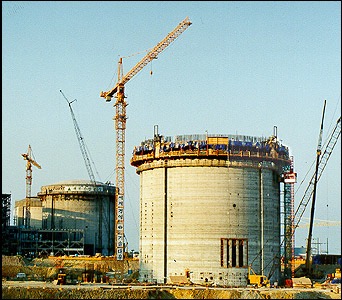
In the aftermath of nuclear disasters such as those that occurred at Three Mile Island, Chernobyl, and Fukushima, much attention has been given to reactor pressure vessels and their capability to contain radioactivity in the event of a nuclear accident or incident. The pressure vessel generally contains nuclear reactor coolant, the reactor core, and the core shroud.
In a boiling water reactor, because of the way it’s controlled and because the turbine effect is a feedback loop to the reactor itself, there is a 3% throw margin in the design. This means there is only 3% of additional margin in between the reactor and the turbine generator side that produces the electricity. This is a large margin compared to a pressurized water reactor, which has only a 2% margin for manufacturing tolerances and design tolerances. For thermal plants it is about the same; a 2% design margin for the coal factor and natural gas combine cycle. There is not much room for error, so manufacturers have to work closely together and be well coordinated by engineers.
“In April of 2010, Arnold Gundersen, a nuclear engineer … released a report which explored a hazard associated with the possible rusting through of the containment structure steel liner. In the AP1000 design, the liner and the concrete are separated, and if the steel rusts through, … “the design would expel radioactive contaminants and the plant could deliver a dose of radiation to the public that is 10 times higher than the N.R.C. limit” according to Gundersen.”33
Emerging Thermo-Acoustic Warning Technology
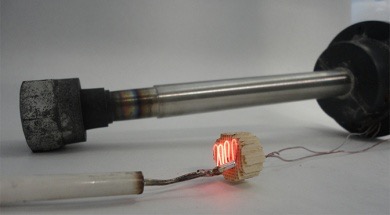
Nuclear reactors have an array of control and sensing systems, but within the core, conditions are so radical that traditional sensors don’t work. This has kept operators from understanding exactly how nuclear cores are functioning. Westinghouse and academics from the Pennsylvania State University and Idaho National Laboratory have developed new technology that detects temperature and pressure changes, plus radiation dosage, with thermo-acoustic sensors that emit a “whistling” frequency to alert operators. Westinghouse is patenting the device and wants to market it by 2019.
This technology features “thermo-acoustic neutron sensors… in the reactor to monitor the core power distribution and the temperature distribution, removing the need for tubing, wiring and vessel penetrations that are required to support existing surveillance instruments. That reduces the costs associated with maintaining such equipment … Plant operators will be able to monitor the core much more accurately, allowing them to produce more electricity from the same amount of uranium … “34
Operators will be capable of monitoring various axial positions in core fuel assemblies and obtain temperature and fission rate data. The devices are 5” – 8” long with resonance chambers of varying lengths that each has a different frequency which clues technicians in to specific problem areas in power distribution. It’s not known if Westinghouse plans to keep this technology in-house.
GE/Alstom Deal Awaits Approval
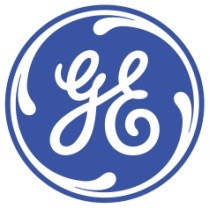

There does appear to be geographical synergy between the two companies. GE is historically dominant in the US and Alstom has a big footprint in Europe. Both have symbiotic product lines. Insiders have various theories as to GE’s intentions in making the bid for Alstom. Some don’t believe the Alstom purchase is about making GE more competitive in the fossil fuel market. Rather, they feel GE bought Alstom for the install base of the gas turbines which allows them to extrapolate their strategy of securing contractual service agreements. It’s likely that GE wishes to gain access to Alstom’s unrivaled sales organization. Alstom’s steam turbine for combined cycle may have also attracted GE. Most don’t feel the coal-fired side was the driver of the GE acquisition.
The tandem approach is working for others in the energy sector as well. “Mitsubishi Hitachi Power Systems Americas, Inc. … announced the formal integration of its Americas operations, a culmination of the historic merger between the thermal power generation systems businesses of Mitsubishi Heavy Industries, Ltd. and Hitachi, Ltd. The global joint venture agreement concluded on February 1, 2014, expanding their presence in the Americas … “35
GE used to command 70% of the market in the US, but in recent times Siemens (Germany) has grown and taken some of that market share. Alstom has always represented a rather small part of the US market, so when it comes to turbine generators, the company that may have grown the most and crowded GE’s market is Toshiba. Years ago, Toshiba set their sights on selling as many steam turbines in the combined cycle market as they could, so they ended up with hundreds of units in the US.
Today, there are very few new plants being built in the states; maybe 20 combined cycle plants a year. GE, Siemens, and Mitsubishi have the best technologies and those three companies are vying to supply gas and steam turbines for those plants. Of course, Siemens does very well in Europe and controls the most market share of the new machines that are being built there. As was mentioned, Alstom has historically performed better in Europe than in the US, but the GE acquisition is seen as a potential win for sales and marketing because of the combined strength the merger will provide. Siemens is going to see more competition in Europe as a result.
20 years ago, the only way to do business in China and India was through joint ventures. Today, GE, Alstom, and the Japanese companies have projects there. There are all sorts of different business relationships in that part of the world. Some companies license technology from (for example) GE or Alstom to build machines or components. That’s been the strategy for entering those markets since the ‘90’s when some of those markets opened up.
Meanwhile … at Babcock and Wilcox
 Babcock and Wilcox are major players in boilers and boiler services and are industry leaders in the US with their SCR and SO2 air quality control systems. According to President and CEO, E. James Ferland, “B&W ended 2014 with a solid quarter and a strengthening backlog heading into 2015 … The Nuclear Operations business had a record year in 2014 with the highest revenue and operating income in its history … The Power Generation segment continued to deliver improved performance in the fourth quarter with strong revenues and additional international bookings for both coal and renewable power plants. Our strategy to drive international growth in the Power Generation business is generating the results we expected as demonstrated by the three projects announced since December, which puts this business in a solid position for the spin-off later this year.”35
Babcock and Wilcox are major players in boilers and boiler services and are industry leaders in the US with their SCR and SO2 air quality control systems. According to President and CEO, E. James Ferland, “B&W ended 2014 with a solid quarter and a strengthening backlog heading into 2015 … The Nuclear Operations business had a record year in 2014 with the highest revenue and operating income in its history … The Power Generation segment continued to deliver improved performance in the fourth quarter with strong revenues and additional international bookings for both coal and renewable power plants. Our strategy to drive international growth in the Power Generation business is generating the results we expected as demonstrated by the three projects announced since December, which puts this business in a solid position for the spin-off later this year.”35
Obviously, B&W has leadership and their market share is very high. They are difficult to beat when they set their sights on any particular job and they do defend their market share well in the US. Over time, they are probably hoping their small nuclear plant technology will become the technology that people choose, but that decision has yet to be made. Most likely, they will continue to operate in the same way that they have been, as they are thought by many to be the best at what they do in the United States.
A Portfolio With No Steam Turbines?
There are varying opinions in the industry as to the importance of having steam turbine manufacturing in the business portfolio of a company. Some point to the small size of the new boiler market in the US and say it’s too late for expansion. Naysayers lament licensing technologies to other parts of the world, believing that it’s pointless to go to India when that market is already saturated with competitors. To be successful it would be necessary to find the right partners and even then, it could require dealing with some very low-cost providers. Europe is a mature market. There are incumbents there, but on the whole Europe is seen as easier to penetrate than Asia.
Contrarily, some feel steam turbine manufacturing is, indeed, an important component of a well-rounded portfolio. Steam turbines are second to gas turbines because gas turbines are considered to be “high maintenance” and require lucrative service agreements. They need to be rebuilt almost annually and every 18-months they require a major overhaul of the gas turbines. Steam turbines typically don’t have to be inspected for ten years. They don’t have the follow-up revenue stream that gas turbines do.

Sources utilized in the creation of this document:
1. http://www.frost.com/prod/servlet/press-release.pag?docid=291681230
2. http://www2.epa.gov/carbon-pollution-standards
5. http://energydesk.greenpeace.org/2015/01/07/oil-price-crisis-mean-fracking/
7. http://news.yahoo.com/eu-seeks-mid-april-talks-russia-ukraine-gas-085425614–finance.html
8. http://www.eia.gov/todayinenergy/detail.cfm?id=19951
10. 2069971http://cleantechnica.com/2015/03/25/cost-of-solar-pv-will-fall-to-2-centskwh-in-2050-says-fraunhofer-study/
11. http://www.alec.org/cpp-facts/expected-plant-retirements/
12. http://www.governing.com/topics/energy-env/gov-epa-rule-requires-major-carbon-reductions-from-states.html
13. http://www.nrc.gov/
14. http://en.wikipedia.org/wiki/Yucca_Mountain_nuclear_waste_repository
15. http://www.windpowermonthly.com/article/1335177/ec-open-in-depth-investigation-ge-alstom-merger
16. http://www.turbomachinerymag.com/blog/content/mitsubishi-hitachi-merger-completed
17. http://www.midmarketresources.com/index.php/energy-industry-value-chain
18. http://newscenter.berkeley.edu/2015/03/11/new-material-captures-carbon-at-half-the-energy-cost/
20. http://www.duke-energy.com/about-us/how-igcc-works.asp
22. http://issues.org/26-2/realnumbers-26/
23. http://www.powerengineeringint.com/articles/2015/01/edf-and-china-nuclear-move-closer-to-hinkley-point-agreement.html
24. http://en.wikipedia.org/wiki/Nuclear_Electric_Insurance_Limited
25. http://en.wikipedia.org/wiki/Main_Page
26. http://www.pennenergy.com/marketwired-oilgas/2015/03/19/babcock-wilcox-begins-process-to-split-into-power-nuclear-companies-after-strong-2014-an-industr.html
27. http://www.reuters.com/article/2015/01/22/toshiba-nuclear-davos-idUSL6N0V11PP20150122
28. http://www.westinghousenuclear.com/New-Plants/AP1000-PWR
31. http://www.eastasiaforum.org/2015/03/06/japans-energy-conundrum/
32. http://public-blog.nrc-gateway.gov/2014/09/25/checking-the-links-in-the-nuclear-supply-chain/
33. http://www.rosatom.ru/en/presscentre/news/cffbf1804bec0c9fbb94bbc2e353ce28
34. http://en.wikipedia.org/wiki/AP1000
36. http://www.marketwatch.com/story/mitsubishi-hitachi-power-systems-americas-mhpsa-integrates-and-expands-presence-in-americas-after-historic-merger-2015-04-01
37. http://www.delawareinvestments.com/smartinvesting/barrons.aspx?utm_source=morningstar&utm_medium=web%20banner%20ad&utm_content=medium%20rectangle%20dynamic%20-%20fund%20family&utm_campaign=smart%20investing#tab_fiveYears
Additional sources:
http://fortune.com/2015/01/09/oil-prices-shale-fracking/
http://marketrealist.com/2015/01/coal-fired-power-plant-vendors-face-opportunities/
http://www.tepco.co.jp/en/corpinfo/ir/kojin/jiyuka-e.html
http://www1.eere.energy.gov/wind/pdfs/57933_eere_wwpp_federal_incentives.pdf
http://cleantechnica.com/2015/02/22/solar-pv-freeze-shale-gas-steps-reports-finds/
http://www.bbc.com/news/world-europe-13592208
http://grist.org/climate-energy/will-obamas-climate-plan-cause-blackouts/
http://www.sunwindenergy.com/wind-energy/siemens-ge-crown-global-wind-turbine-market-share
http://www.reuters.com/article/2014/06/16/alstom-siemens-turbines-idUSL5N0OX4MN20140616
http://science.howstuffworks.com/environmental/green-science/carbon-capture1.htm
http://www.edfenergy.com/energy/nuclear-new-build-projects/hinkley-point-c
http://www.insidefac.com/crystal-river-nuclear-claim-settles-for-835mn
http://www.energyandcapital.com/articles/toshiba-tyo-6502-to-sell-westinghouse-stake/2947
http://articles.economictimes.indiatimes.com/2015-01-29/news/58586566_1_gujarat-plant-fukushima-daiichi-nuclear-plant-india-and-japan
http://en.wikipedia.org/wiki/AP1000
http://customstoday.com.pk/jordan-russia-sign-10-billion-nuclear-agreement-3/
http://www.reuters.com/article/2015/03/17/alstom-ma-ge-eu-idUSL6N0WJ27A20150317

